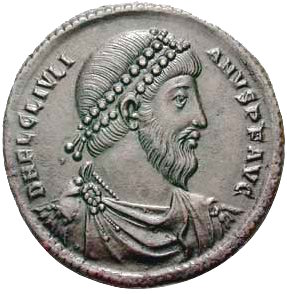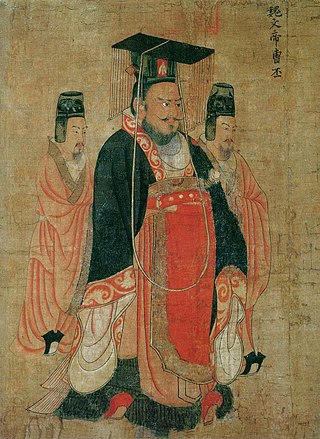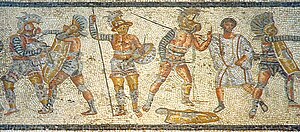AD 41 (XLI) was a common year starting on Sunday of the Julian calendar. At the time, it was known as the Year of the Consulship of C. Caesar Augustus Germanicus and Cn. Sentius Saturninus. The denomination AD 41 for this year has been used since the early medieval period, when the Anno Domini calendar era became the prevalent method in Europe for naming years.

The 20s decade ran from January 1, AD 20, to December 31, AD 29.
The 310s decade ran from January 1, 310, to December 31, 319.
The 320s decade ran from January 1, 320, to December 31, 329.

AD 23 (XXIII) was a common year starting on Friday of the Julian calendar. At the time, it was known as the Year of the Consulship of Pollio and Vetus. The denomination AD 23 for this year has been used since the early medieval period, when the Anno Domini calendar era became the prevalent method in Europe for naming years.
The 0s BC were the period between 9 BC and 1 BC, the last nine years of the before Christ era. It is one of two "0-to-9" decade-like timespans that contain nine years, along with the 0s.
The 140s decade ran from January 1, 140, to December 31, 149.

Year 313 (CCCXIII) was a common year starting on Thursday of the Julian calendar. At the time, it was known as the Year of the Consulship of Constantinus and Licinianus. The denomination 313 for this year has been used since the early medieval period, when the Anno Domini calendar era became the prevalent method in Europe for naming years. This year is notable for ending of the persecution of Christians in the Roman Empire.

Year 440 (CDXL) was a leap year starting on Monday of the Julian calendar. At the time, it was known as the Year of the Consulship of Valentinianus and Anatolius. The denomination 440 for this year has been used since the early medieval period, when the Anno Domini calendar era became the prevalent method in Europe for naming years
The 330s decade ran from January 1, 330, to December 31, 339.

Year 943 (CMXLIII) was a common year starting on Sunday of the Julian calendar.

Year 619 (DCXIX) was a common year starting on Monday of the Julian calendar. The denomination 619 for this year has been used since the early medieval period, when the Anno Domini calendar era became the prevalent method in Europe for naming years.
The 240s decade ran from January 1, 240, to December 31, 249.
Year 248 (CCXLVIII) was a leap year starting on Saturday of the Julian calendar. At the time, it was known as the Year of the Consulship of Philippus and Severus. The denomination 248 for this year has been used since the early medieval period, when the Anno Domini calendar era became the prevalent method in Europe for naming years.

Year 361 (CCCLXI) was a common year starting on Monday of the Julian calendar. At the time, it was known as the Year of the Consulship of Taurus and Florentius. The denomination 361 for this year has been used since the early medieval period, when the Anno Domini calendar era became the prevalent method in Europe for naming years.

Year 314 (CCCXIV) was a common year starting on Friday of the Julian calendar. At the time, it was known as the Year of the Consulship of Rufius and Annianus. The denomination 314 for this year has been used since the early medieval period, when the Anno Domini calendar era became the prevalent method in Europe for naming years.

Year 220 (CCXX) was a leap year starting on Saturday of the Julian calendar. At the time, it was known as the Year of the Consulship of Antonius and Eutychianus. The denomination 220 for this year has been used since the early medieval period, when the Anno Domini calendar era became the prevalent method in Europe for naming years.
Year 90 BC was a year of the pre-Julian Roman calendar. At the time it was known as the Year of the Consulship of Caesar and Lupus and the Third Year of Zhenghe. The denomination 90 BC for this year has been used since the early medieval period, when the Anno Domini calendar era became the prevalent method in Europe for naming years.

The Upheaval of the Five Barbarians also translated as the Rebellion or the Revolt of the Five Barbarians is a Chinese expression used to refer to a chaotic period of warfare during the Jin dynasty (266–420) roughly between 304 and 316 which heavily involved non-Han peoples living in China, commonly called the Five Barbarians. Coinciding with the War of the Eight Princes that greatly weakened the empire, these conflicts eventually drove the Jin imperial court out of northern and southwestern China.
Liu Rong was the eldest son of Emperor Jing of the Han dynasty. His mother was Lady Li (栗姬). He was made crown prince of the empire under the formal title Crown Prince Li (栗太子) on 16 May 153 BC, but demoted less than three years later to Prince of Linjiang, on 17 January 150 BCE. He had the dubious honor of becoming the first deposed crown prince in Chinese imperial history.










